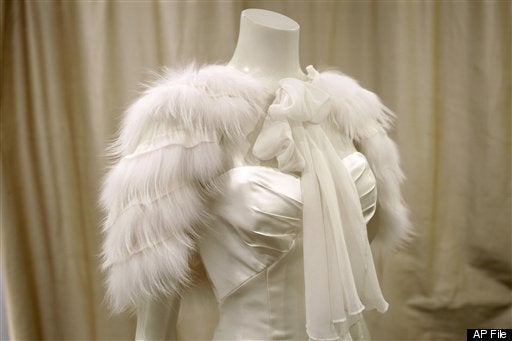
Send all your eco-inquiries to Jennifer Grayson at eco.etiquette@gmail.com. Questions may be edited for length and clarity.
A lot of my friends are wearing faux fur, but I've heard that it's made from some not-so-eco materials. Is this true? And if that's the case, wouldn't it just be better to wear real fur, since it's a natural material?
-Zoey
I have a confession to make: I own a fur vest. But I feel OK about wearing it, because the fur was sustainably harvested from a lemming mass suicide and processed using GM-free cornstarch. No part of the lemming was wasted: The omega 3-packed wild meat was sold to a hunger relief organization at a fair price, and the bones were turned into a natural phosphate fertilizer. My purchase also supported native trappers who rely on this income for their livelihood.
The only thing is, when I wear the vest I get a lot of dirty looks, so I'm always sure to have this story well rehearsed in order to avoid further scrutiny. I don't deserve to get splashed with a can of red paint.
I jest, of course. (And those in the know can slap me on the wrist for perpetuating the lemming suicide myth.) But I spun this silly story to illustrate just how complicated navigating the fur marketplace has become.
There's faux fur. Vegan fur made from organic cotton. An "eco" fur made from the brushtail possums destroying New Zealand's forests. The latest craze is nutria, an invasive Louisiana rodent whose heralded-as-humane hide has graced the runways of J. Mendel and Oscar de la Renta.
Kind of makes you long for the days when the issue of wearing fur was as black and white as Cruella de Vil's coiffure, no?
If you're hoping to have Santa slip a sustainable sable under the tree for you this year, however, you may find the following disappointing:
First, nearly 85 percent of furs today come from farm-raised animals. That may sound like a laudable alternative to trapping animals (including endangered ones) in the wild. But these animals are often subject to the same harsh conditions (i.e., crowding and confinement) that exist in concentrated animal feeding operations, aka factory farms.
Second, while the animal waste from these fur farms can be a source of organic fertilizer, it can also pollute local groundwater if it's not carefully managed. So can the chemicals used to treat the skins, which include the highly carcinogenic formaldehyde, chromium, and naphthalene.
These chemicals prevent the fur from rotting. They also compromise its biodegradability. That pretty much kills the "natural" argument, doesn't it?
The obvious alternative, ostensibly, should be faux fur. It seems to be everywhere these days, inserting a bit of would-be green luxury into our scrimp-and-save times. Even PETA seems OK with it, pushing the pseudo-pelts on its website.
The truth, though, is that while fake fur may be animal-friendly, it is certainly not earth-friendly, since it's made from petroleum-based, non-biodegradable, energy-intensive materials like nylon and polyester. (I would argue, too, that it isn't even animal-friendly, since hurting the planet doesn't exactly encourage animal survival.)
Then there's the unfortunate situation, as witnessed in the film Skin Trade, that fur being labeled as faux may, in fact, be Fluffy and Fido.
So here's where I insert the stock greenie line that no fur is good fur, that even an ethical fur sends the wrong message, blah blah blah. Except I can't. I need to say something else first.
In my mind, wearing real fur is no greater an eco-sin than, say, eating a fast food cheeseburger. Which is to say that eating a fast food cheeseburger is, in fact, an eco-sin, but you certainly don't see people being splashed with red paint as they walk into a McDonald's (though maybe they should).
So my new rule is this: I'm not saying it's OK to wear fur, but don't give people the stink-eye for wearing fur if you're still eating factory-farmed meat. Or driving a car with leather seats. Or wearing Uggs.
I'll also add that if you are native American or live above 60 degrees north latitude, you can probably justify the full-length fox. If you're everyone else, but life won't be complete without that touch of mink, at least opt for vintage or a refurbished family heirloom. Just be prepared to do some explaining.
